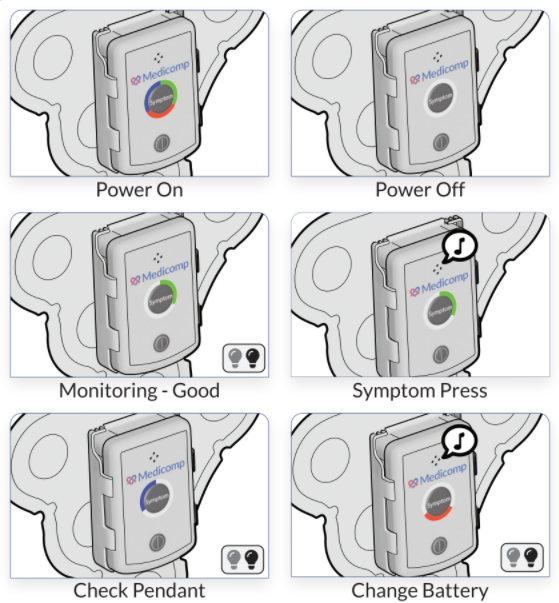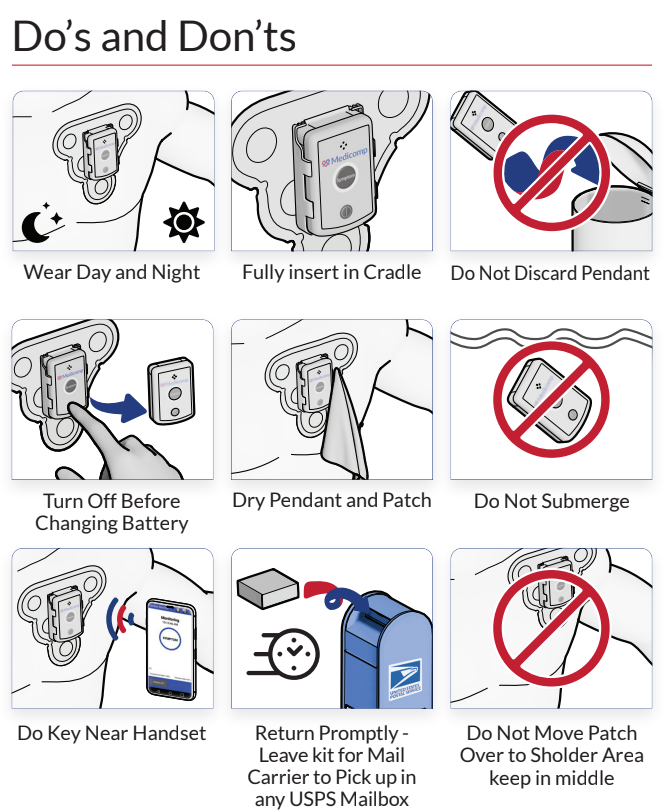Frequently Asked Questions
Cardiac Monitoring FAQs
It’s easy! You may be hooked up in your doctor’s office, or your doctor may order a monitor kit shipped to your home, where you will hook up yourself.* In either case, you will follow your doctor’s instructions and refer to the Quick Start Guide included in the monitor kit and the online video for your monitor type. You’ll wear your monitor continuously for the number of days your doctor prescribed. Whenever you feel a symptom, you will press the Symptom button on the device and log an entry in a diary. At the end of your procedure, promptly return the equipment to React Diagnostics. Then, you will follow up with your doctor to discuss the results.
*If your doctor prescribed a TelePatchTM monitor (comes with a smartphone) and it is being sent to your home, please see our Self-Hookup What to Expect brochure for Event and MCT procedures.
It’s really easy! Holter tests are normally prescribed for one or two days, while Long-Term Holter tests are for three to 14 days. In either case, you will be hooked up in the doctor’s office or hospital, and then sent home. You wear the monitor continuously for the number of days prescribed. Whenever you feel a symptom, you press the Symptom button on the device. The Holter monitor is always recording your heart’s electrical activity (ECG), but when you press the Symptom button you mark certain recordings for your doctor to especially review. It’s important to keep a diary of your symptoms, including what you felt, the date and time, your location, and what you were doing. At the end of your procedure, promptly return the equipment along with your diary to your doctor’s office.
Simply put, ambulatory cardiac monitors are medical devices that measure the electrical activity of your heart to determine if any cardiac irregularities exist. Prescription-grade ambulatory cardiac monitors come in three main types: Holter, Event, and Mobile Cardiac Telemetry. Your doctor will prescribe the type of monitor she believes is best for you.
You can rest assured that your doctor chose the best monitor for you. Due to patented, highly advanced technology, React Diagnostics’ monitors have proven to deliver more clinically significant data to your doctor and deliver it faster than any other ambulatory cardiac monitor available.
Cardiac monitors record and transmit your heart’s electrical data. These recordings are uploaded to React Diagnostics’ Cardiac Monitoring Centers for analysis by highly trained, certified cardiac technicians, who, in turn, create reports for your doctor to interpret.
Please refer to your patient guide for more information.
If you are prescribed a Holter monitor, it is typically worn for 1-4 days. If you are prescribed an event or mobile cardiac telemetry monitor, it is worn for a longer term, typically 30 days. But your doctor will determine the specific length of time you should wear the monitor.
It’s critical that you follow your doctor’s orders and wear the monitor day and night for the full number of days your doctor prescribed. Your React Diagnostics monitor is designed to uncover possible arrhythmias you may not be aware of, and it needs to be worn continuously for the full length of the procedure so it may capture arrhythmias that may appear only rarely, with or without symptoms.
ECG stands for electrocardiogram. It is a recording of the electrical activity of your heart. Your doctor can use an electrocardiogram to look for patterns in your ECG that can help to diagnose various arrhythmias.
An arrhythmia is a condition in which the heart beats with an irregular or abnormal rhythm. Some arrhythmias are harmless; others may indicate serious threats to your health.
Yes. The monitor can detect possible arrhythmias and make recordings on its own – even while you’re sleeping.
Generally, yes, but follow your doctor’s instructions. This monitor is meant to go with you as you go about your daily routine, including exercising and most of your regular activities.
You should not swim or otherwise soak any of our monitors under water. Whether you may shower depends on the monitor you have.
TelePatch: The TelePatch Pendant and Electrode Patch are water resistant. They are designed to withstand brief periods of wetness, such as in light rain or while showering. You can and should wear TelePatch — and keep it turned on — while showering. The handset, however, is NOT water resistant. Avoid any moisture from coming in contact with the handset. If the handset get wets, please call us. You may need a replacement.
All Other Monitors: All other monitors, including pendants and smartphones, are NOT water resistant and should not get wet. Avoid any moisture from coming in contact with the devices. You should wear the Pendant on the outside of your clothing if there is a chance perspiration could come in contact with it. If your devices get wet, please call us. You may need a replacement.
All React Dignostics electrode patches are hypoallergenic. Minor skin irritation is normal while wearing any electrode. When re-applying electrodes, change their location slightly to lessen skin irritation. If you experience excessive irritation that may interrupt your procedure, please call us for assistance at 877-996-5553.
Your doctor can share the test results with you.
If you have a Holter monitor, return the monitor to your doctor. If you have any other type of monitor, please send the monitor back to React Diagnostics in the postage-paid envelope provided in your kit. It is important to send back all hardware and unused accessories upon completion of your procedure. All equipment is the property of ReactDx. You may be invoiced for unreturned items.
View our full website and patient privacy policies by clicking here.
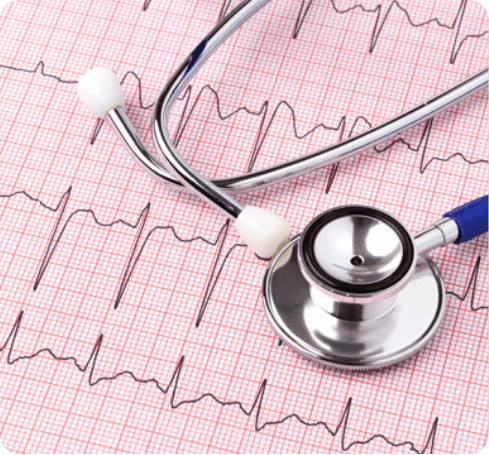

Event & Mobile Cardiac Telemetry FAQs
It’s easy! You may be hooked up in your doctor’s office, or your doctor may order a monitor kit shipped to your home, where you will hook up yourself. In either case, you will follow your doctor’s instructions and refer to the Quick Start Guide included in the monitor kit and the online video for your monitor type. You’ll wear your monitor continuously for the number of days your doctor prescribed. Whenever you feel a symptom, you will press the Symptom button on the device and log an entry in a diary. At the end of your procedure, promptly return the equipment to React Diagnostics. Follow up with your doctor to discuss the results.
If your doctor prescribed a TelePatchTM monitor (comes with a smartphone) and it is being sent to your home, please see our Self-Hookup What to Expect brochure for Event and MCT procedures
Whenever you feel a symptom you believe could be related to your heart. For example: shortness of breath, dizziness, pain, weakness, etc. Follow your doctor’s orders for when you should make recordings.
Many patients do not have symptoms every day, but you should continue to wear the monitor every day because it can detect possible arrhythmias and make recordings on its own – even when you don’t feel any symptoms.
Do not worry about accidental Symptom button presses. We purposefully make it easy for patients to start an ECG recording by making the Symptom button easily accessible and easy to press. It is important to make a recording whenever you feel a symptom, so we don’t want anything hindering you from doing so. Our cardiac technicians can distinguish accidental recordings from others, so there is no reason to worry about them.
The Smartphone conserves its internal battery by “going to sleep” and turns its display screen off. Wake it up by pressing any button on the Smartphone. The monitor continues to function while it’s in sleep mode.
When you see the word Monitoring on the Smartphone screen, the monitor is working. Remember, you may have to press a key on the Smartphone to wake it up if the screen has gone blank.
Check to see if 3G is displayed in the upper-right corner of the Smartphone screen. If 3G is displayed, you are within range. If, instead, you see a small icon of an antenna (looks like a tiny funnel), you may be out of range.
Remove the depleted battery and replace with the charged battery. Be sure to place the depleted battery in the included charger so it will be ready when the new battery is low.
The Smartphone will indicate when the Pendant batteries need to be changed. Look for the percentage of battery power available next to the Pd Batt. Change the battery when the Pd percentage reaches 5%. But if it is at 15% or below when going to bed, change the battery so that it does not run out of power while you’re sleeping.
We recommend charging the Smartphone daily. Charging on a night stand while you’re sleeping is a good practice. The Smartphone will indicate when it needs to be recharged. Look for the percentage of power available next to SP Batt. Recharge the Smartphone when the SP percentage reaches 20%.
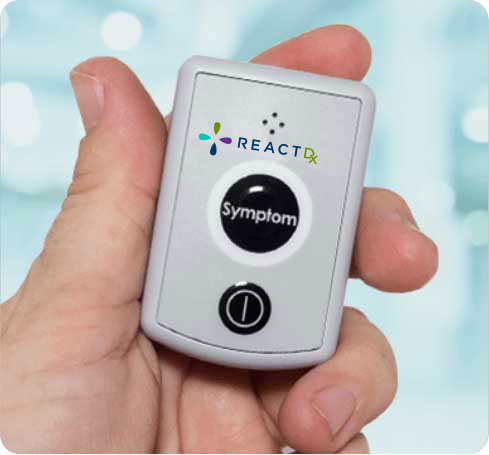
Insurance & Billing FAQs
While this test is covered by most insurance, including Medicare, you’ll be responsible for any co-pays or deductibles. Our friendly billing team is available if you have any questions about insurance or billing. Call toll-free: (800) 390-2439.
No. Your test is billed as a set-term diagnostic procedure, regardless of how many recordings you make, or how many days your doctor prescribed the procedure length, or how many days you actually wear it.
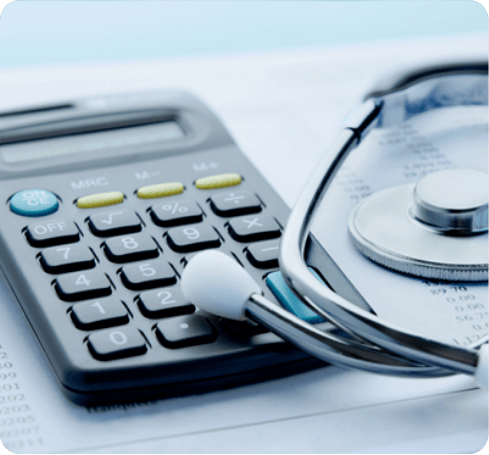
Sleep Monitoring FAQs
- Move and tighten the Breath Sensor so it is resting just above your upper lip and is centered below your nose.
- Make sure the side with the five small holes is facing your mouth.
- Secure the Breath Sensor Cables to your cheeks with medical tape.
- Turn off ceiling fans, all other fans should face away from test subject.
- Blow into the Breath Sensor
- If the Breath Sensor LED light does not turn green, call ReactDx at 1-877-753-3776 during business hours.
- Check to see if the Finger Sensor is corectly positioned on the fingertip and that the cable is connected to the device.
- Dark nail polish should be completely removed.
- Warm your fingertip.
- If the Finger Sensor LED light does not turn green, call ReactDx at 1-877-753-3776 during business hours.
- Move and tighten the Chest Sensor so it is just below the breasts.
- Squeeze the Chest Sensor Belt tubing between two fingers.
- CHeck for any knots or holes in the tubing.
- If the Chest Sensor LED light still does not turn green, call ReactDx at 1-877-753-3776
- Press the On/Off button firmly for 2 seconds and let go to turn the device on. If the LED light still does not turn green, the battery may be too low.
- Connect the device to the charger and charge for 3 hours. If the LED light still does not turn green, call ReactDx at 1-877-753-3776
Leave the sensors in place and connected to the AccuSom on your arm. You can move around and return to bed.
The AccuSom™ test cannot be used at the same time as your CPAP machine.

